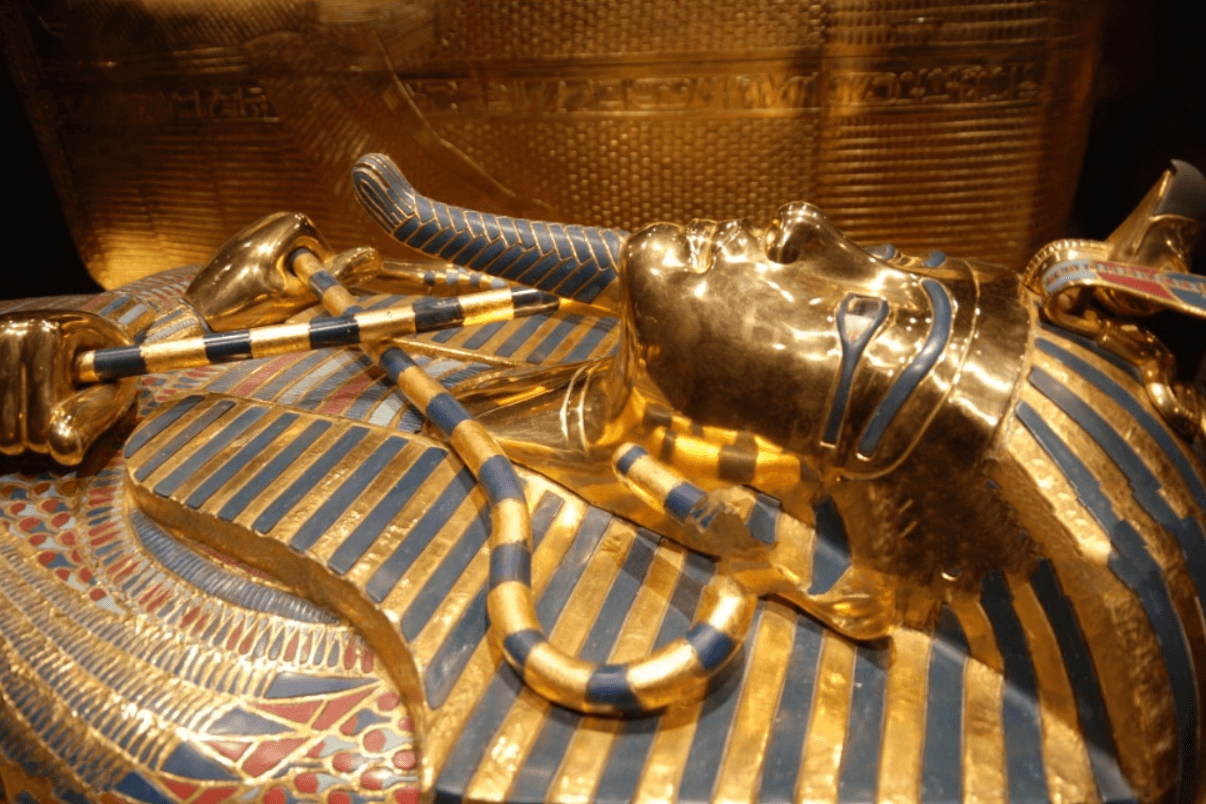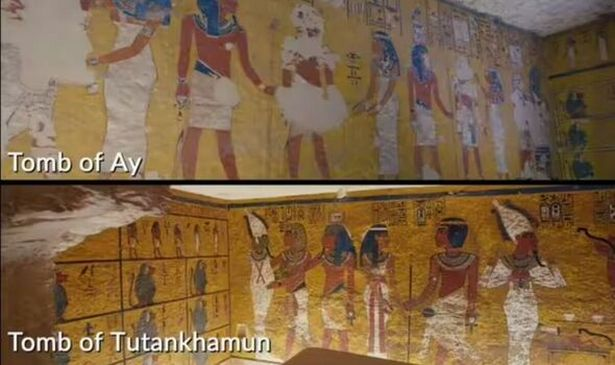The discovery of an "overlooked feature" on Tutankhamun's iconic death mask has sent shockwaves through the archaeological community. Tutankhamun, famously known as the Boy King of Ancient Egypt, ruled for a mere decade before his untimely demise, yet his legacy endures as one of the most prominent figures of ancient history.
The golden funerary mask of Tutankhamun, now housed in the Egyptian Museum in Cairo, has long captivated scholars and enthusiasts alike. However, recent scrutiny by Professor Joann Fletcher, an esteemed Egyptologist from the University of York, has revealed a compelling revelation. While examining burial records meticulously maintained by British archaeologist Howard Carter at Oxford University's Griffith Institute, Professor Fletcher stumbled upon a detail previously overlooked by researchers - the presence of pierced ears on the death mask.
In an illuminating moment during the History Hit documentary, "The Valley Of Kings: The Egyptian Golden Age," Prof Fletcher shared her insights, stating, "It has been suggested that this mask was originally made for someone else. Research suggests that Tutankhamun would not have worn earrings beyond childhood. So, by the age of 20, when he died, he would not have been portrayed with pierced ears."
This revelation has led Prof Fletcher to propose a groundbreaking hypothesis: the possibility that the death mask was crafted for a different pharaoh altogether, potentially one with no direct relation to Tutankhamun. "This mask was not made for an adult male pharaoh," she noted, pointing out discrepancies in the gold used for the mask's face compared to the rest. "Evidence of soldering is clearly visible on the mask. It now seems as if Tutankhamun's own face was effectively grafted onto the mask of the previous ruler. They may have had pierced ears, they may have been a woman, it may well have been Nefertiti."
The enigmatic Queen Nefertiti, renowned for her influence during the Eighteenth Dynasty, emerges as a key figure in this intriguing narrative. Married to Akhenaten, Tutankhamun's father, yet not his mother, Nefertiti remains a subject of fascination and mystery. Speculation persists regarding her potential role in the events surrounding Tutankhamun's reign and burial.
Furthermore, insights from experts, such as Aliaa Ismail, shed light on the intricate dynamics of ancient Egyptian succession and burial practices. Ismail's observations in the "Lost Treasures of Egypt" documentary suggest a deliberate orchestration in the allocation of tomb contents, hinting at a strategic maneuver by Ay, Tutankhamun's successor, to claim a grander burial site for himself.
Tutankhamun's tomb compared to Ay's
As the mysteries surrounding Tutankhamun's death mask deepen, the legacy of Ancient Egypt continues to intrigue and inspire, inviting further exploration into its rich and enigmatic history.








